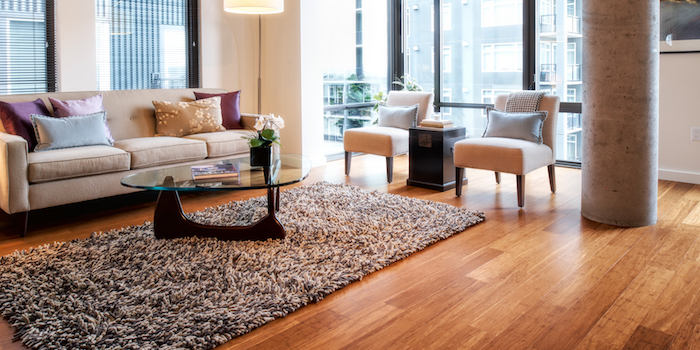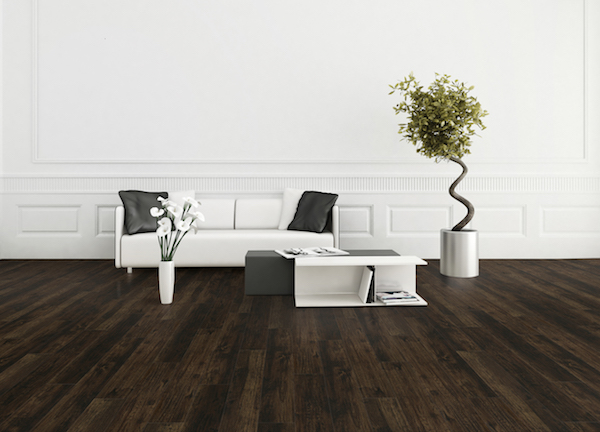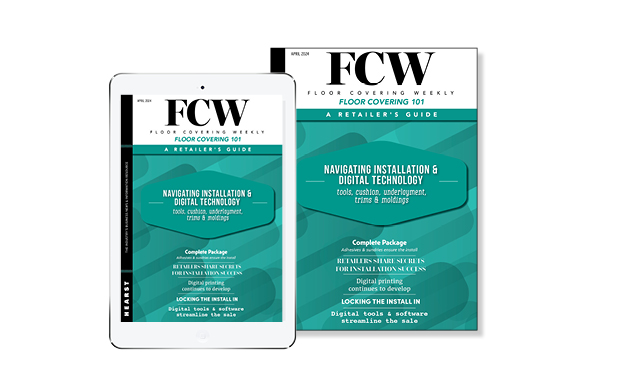Features
Hard surface tech goes global
Monday, September 24, 2018
By Elise Linscott
 The majority of bamboo floors are sourced from China, according to company Bamboo Hardwoods.
The majority of bamboo floors are sourced from China, according to company Bamboo Hardwoods.
While trends and technologies in hard surface flooring travels quickly and are often adaptable to individual markets and countries, the production capacity in each flooring category can vary greatly among global regions.
Between hardwood, tile, and resilient products like vinyl and MLF, the amount of imports versus domestic production capacity depends on the product, but more U.S. manufacturers say they’re looking to increase their stateside production, even for newer product categories.
Resilient
Technology and resource development for vinyl products have historically been predominantly in Asia, said Lindsey Nisbet, marketing director at EarthWerks.
“With so many components of the product being readily available overseas, it makes for a ‘one-stop shop’ for the category,” Nisbet said. “As demand continues to increase, technology will need to keep up with this demand and we foresee productivity increasing exponentially.”
Technology has been key to enhance the features of the print films, embossings, bevels and durability of vinyl flooring, she added.

Most resilient products, like EarthWerks’ Parkhill WPC flooring, is sourced from Asia.
Many distributors have ventured into the world of sourcing from abroad, but some have indicated they would prefer to source LVT and MLF products domestically, according to David Sheehan, senior vice president of product management for resilient products at Mohawk Flooring.
“Long lead times, the complexity of doing business overseas, and assurance of quality, are among the reasons why sourcing products domestically make sense,” Sheehan said.
Currently, Mohawk sources its rigid products from overseas, but will be actively producing right in the U.S. in 2018, continuing to supplement with overseas suppliers, Sheehan said.
Hardwood
Many hardwood products today are sourced from the country of origin – Mohawk, for instance, produces nearly all of its wood products in the U.S. and sources minimally from overseas, Sheehan said.

Many producers including Mohawk source the majority of their hardwood products domestically.
Bamboo is in a unique category when it comes to domestic versus overseas production, since there are not enough bamboo plantations in the U.S. to support the demands for bamboo flooring, said David Keegan, president of Bamboo Hardwoods.
“As of now, China is the best place to source bamboo flooring because China has both an abundance of bamboo and a mature manufacturing base,” Keegan said. “That being said, the dream we have always had for bamboo is to source it from many countries around the world as different species have different visuals and characteristics. There are efforts underway to increase acreage of bamboo in the USA which, once mature, would be a fantastic resource for producing USA-made bamboo products. As of now, tariffs on bamboo from China would really not make logical sense because as of now there is no way to harvest and produce this in the States.”
Tile
According to Noah Chitty, technical services director at Crossville, there are no differences between what technologies a domestic manufacturer has available to them compared with an overseas tile manufacturer. The exact same technologies are available to both; it only depends on what an individual manufacturer has decided to invest in.
“Visuals have driven the main improvement via inkjet digital printing,” Chitty said. “But while the pressing technologies could be seen in some aspects as having the potential to also increase performance (lack of stress from elimination of traditional die cavity pressing), you could make the case that the other aspects of equipment that the larger formats have driven improvements in like kiln, polishing, and rectifying are also improving the technology behind all aspects of tile manufacturing.”
For cost competitive reasons, some domestic manufacturers elect not to implement certain technologies in domestic production, such as polished porcelain tiles, small size wall tiles, double load and soluble salt production technologies geared to commercial projects, among others, said Paulo Pereira, senior merchant at MSI Stone.
Aside from improved visuals, there have also been advancements in tile’s performance, Pereira said.
“In the performance aspect, recent technologies allow manufacturers to introduce sizes larger than 24x48-inches, which used to be the largest size available using previous pressing technologies,” Pereira said. “Today, sizes such as 5x10-foot slabs are becoming a trend in the counter top market.”
FCW Live


Welcome to Floor Covering 101

COVID-19 Communications

Greenbuild Conference
November 12 - November 15, 2024
Washington, D.C. - Walter E. Washington Convention Center